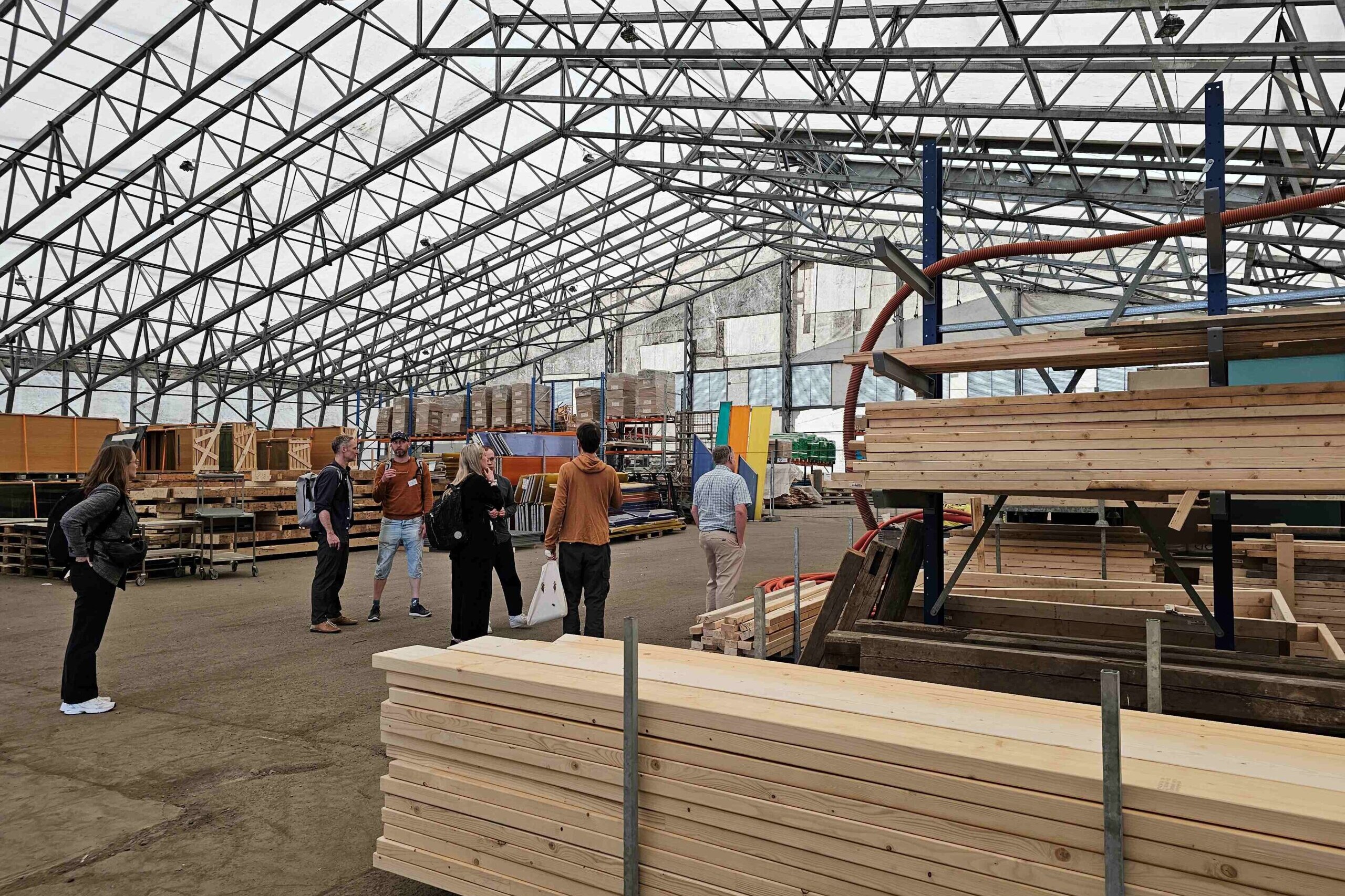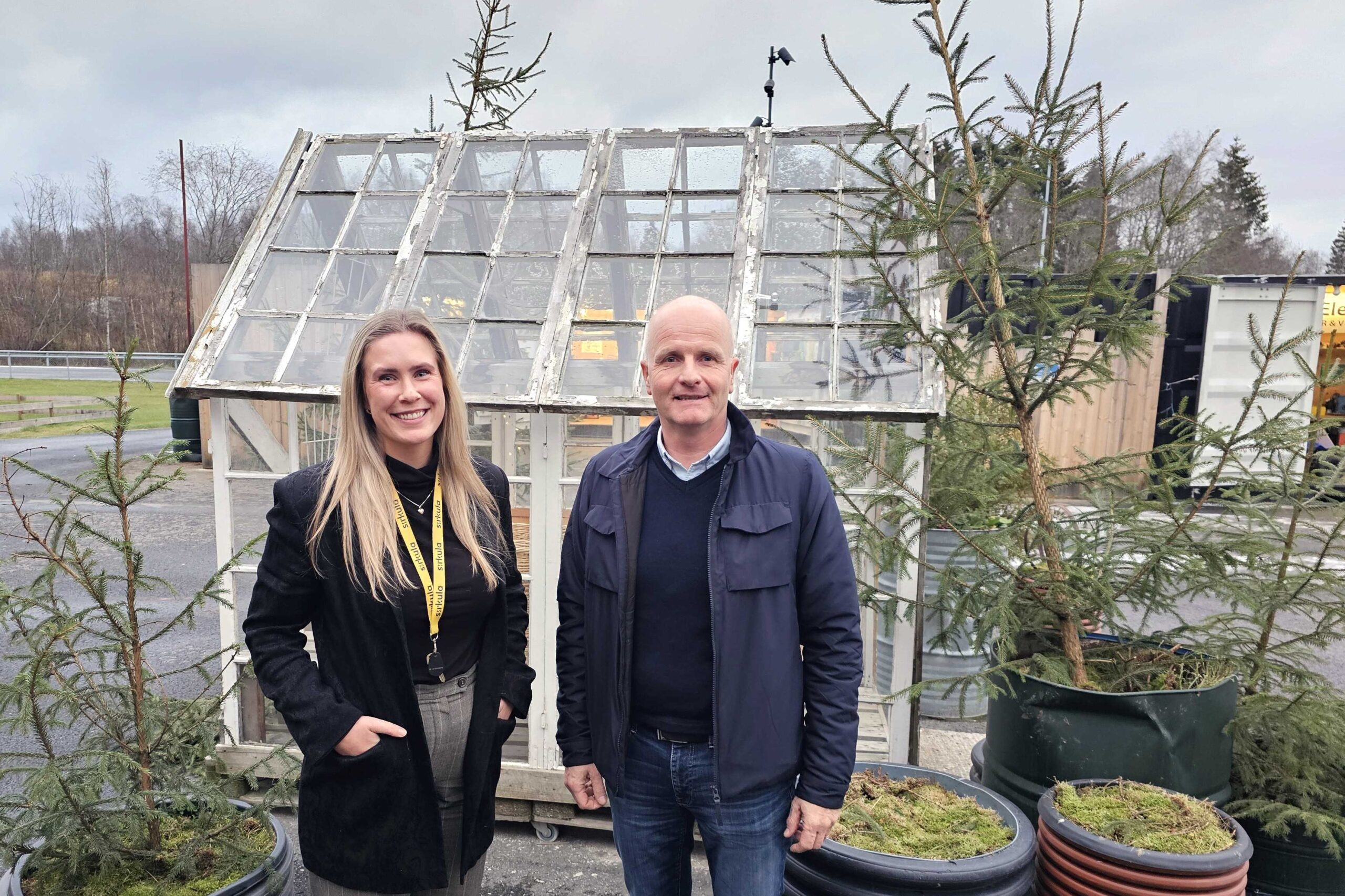With developments in EU regulations, Norwegian regulations and green financing, it’s clear that the reuse of building materials will become the new norm within a few years.
The preparatory work has been going on for two years, with market and product flow surveys, as well as study trips to facilities for the reuse of building materials in the Nordic region. Clear goals have now been set for the project and a business model developed. The goal is to “establish a physical and digital regional platform for the reuse of building materials, with a critical mass of both goods and users”.
Starting in the Mjø area
As the plans stand, the company will start with an area of around 2,500-3,000 m2. The agreement to lease the site will be signed as soon as the financing is in place. “We’re planning to start in the Mjø area to verify that this is viable. But we’re thinking of eventually setting up a network of centers in Inland Norway and perhaps also outside our own region,” says Jon Inge Kjørum, Marketing and Sustainability Manager at Østlandet Gjenvinning.
Every year, Sirkula and ØG receive around 150,000 tons of waste containing construction fractions, such as wood. In addition, the new center will handle construction products from the construction industry, such as surplus and returned goods.
Aimed at business customers
The initiative is aimed at the professional construction market, and project manager Ingrid Staveland Reppe says that they have held meetings with builders and contractors to understand what it takes to succeed.
On the one hand, the construction industry will be suppliers of reusable goods – what we currently refer to as waste from construction sites. There is a motivation here to save time and money, among other things by not having to pay for a waste fraction. In addition, it would be desirable to have figures for the greenhouse gas accounts that show that less has gone to waste and more to reuse.
When buying reusable goods, the business customer is keen not to lose time or money. “This means that we must have the right goods available at the right time and time-efficient administration and transport. In addition, we must provide quality guarantees for the products and data for the greenhouse gas accounts that show savings, both when submitting and purchasing reusable goods,” says Reppe.

What will the solution look like
The product range will initially be materials for non-load-bearing structures. A great deal of testing and documentation is required for load-bearing structures, and furniture and fixtures are sold through the company Reinventar.
Today, the construction industry pays to get rid of waste, while it will be free to deliver to the reuse center, where you only pay for the transport. – We envision a reuse container at the construction site that is set aside for materials for reuse. The transportation will be handled by an external company, and here we also see some future opportunities with return freight from those who supply building materials,” says Kjørum.
The plan is for the reuse center to become an AS with a general manager and 1-2 employees. However, the acquisition of land, a warehouse, hiring and digital solutions are on hold until the financing is ready.
More people need to join to succeed
Now the project needs more partners to succeed. “We need supporters for the first three-year period, after which the goal is for this to take care of itself,” says Kjørum.
The total cost is stipulated at SEK 6 million over three years. The project needs external funding, and there are many people who want to be involved as partners, but so far it is difficult to get them to commit financially.
Both Kjørum and Reppe foresee this becoming an important business area in just a few years’ time. “I think a lot will happen within a five-year period, and that in the near future we can expect most construction projects to demand a proportion of reused materials,” says Kjørum.

